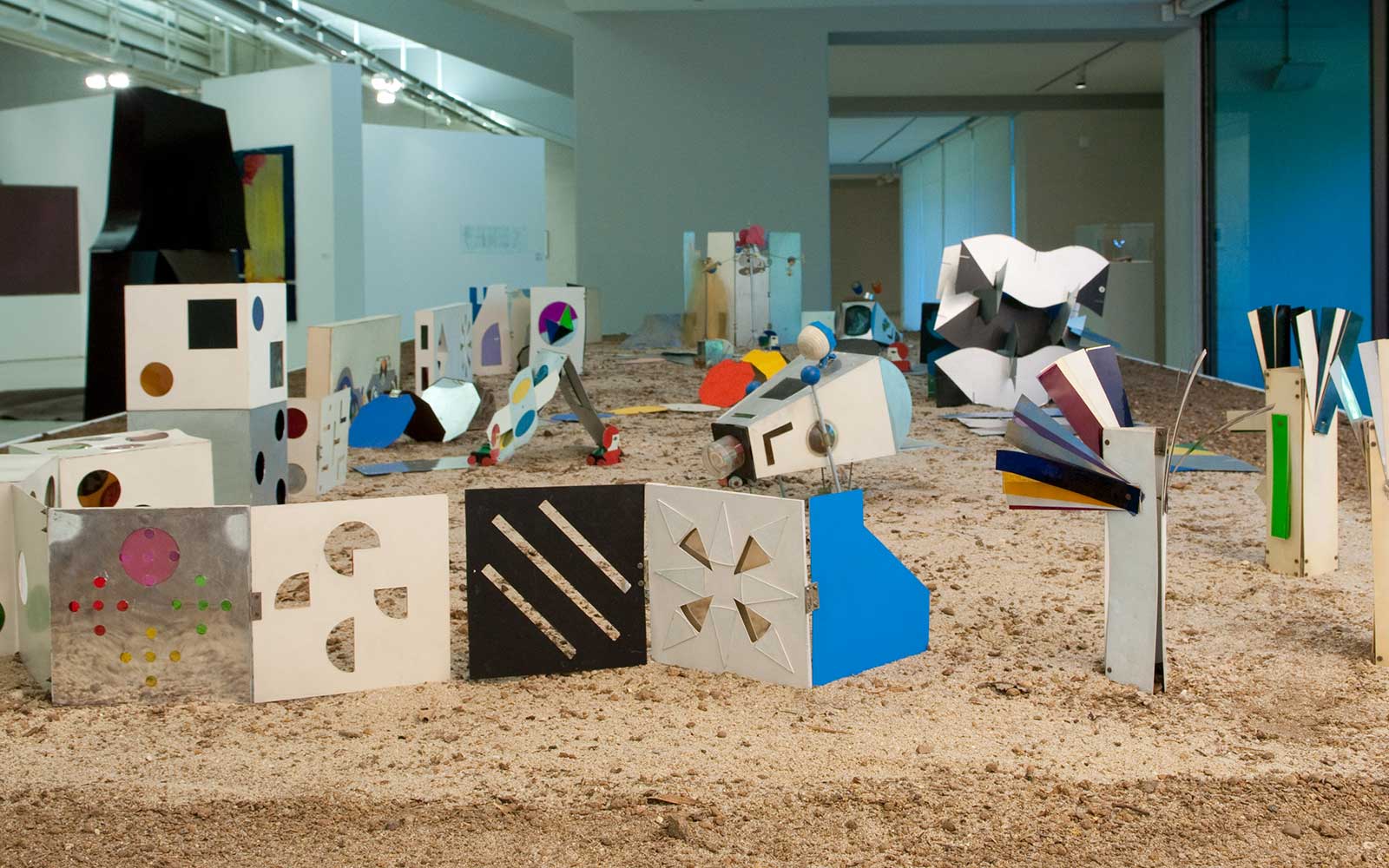Citymobil by António Costa Pinheiro

The work Citymobil, now acquired by the CAM, integrates a cycle of the same name developed by António Costa Pinheiro (1932-2015) between 1967 and 1975. An urban intervention project that never made it past the project stage, it corresponds to the phase of his career in which he abandoned painting, after the success of his series Os Reis [The Kings]. Citymobil represents a refusal to participate in the art market and art’s academic and museological structures and, simultaneously, formulates an alternative to the established artistic and political system.
It integrates drawings, prints (that were already in the CAM’s possession), photographs, urban objects, photocopied leaflets distributed on the Munich U-Bahn, and this model, where the utopia created by the artist materialises three-dimensionally. They are, in the words of the artist, ‘toys for me to play with and for others to be able to play’,[1] as access to this utopia resides in the ‘imagination’ (hence the motto of the series ‘L’imagination est notre liberté’).
Critique of contemporary society through the construction of spatial utopias has a long tradition but resurfaced with intensity in the 1960s due to the Space Race, which dominated the cultural and scientific agenda of the US and the USSR during the Cold War. The launch of Sputnik in 1957, the journey of the first man into space with the flight of Yuri Gagarin in 1961 and the arrival of man on the moon in 1969 dominated the imaginary of an era, providing utopian and dystopian visions. Renouncing the conventional epic nature associated with such projections, Costa Pinheiro invents a small-scale, human, portable utopia, inhabitable only with the imagination of those willing to play the game.
Costa Pinheiro invents the universe, the characters, a language and the technology of a ‘universonaut’ who visits Earth from another planet, the Planet of Peace and Two Moons. It is a post-atomic society, without war, hunger or racial discrimination. It has solved ecological problems through the use of new energy sources, possesses new forms of communication and has abolished borders, establishing cosmic freedom of movement. It is a society, the artist tells us, without violence, whose inhabitants have now reached another level of intellectual, emotional and spiritual development.
In the 55 small elements that make up this model, we observe the ‘universonauts’, their ships and ‘colour-ray’ (the visual-emotive language of this universe) transmission devices, but also more abstract objects, like cubes with colourful geometric shapes, small cuboids which open up into fans of colours, radio towers with suspensions resembling mobiles, ‘cosmo-language’ decoding devices, solid and three-dimensionally overlapping colours, and fabricated landscapes that delimit the space and add narrative details.
An ‘invisible city’, inhabitable only with the imagination, Citymobil connects a personal with a social dimension, resulting from the highly politicised moment of intense opposition to the established order of the late 1960s and 1970s.
Luísa Cardoso
Researcher and historian of contemporary art
[1] Interview by Adelino Gomes with António Costa Pinheiro in Público, 05.05.2008.